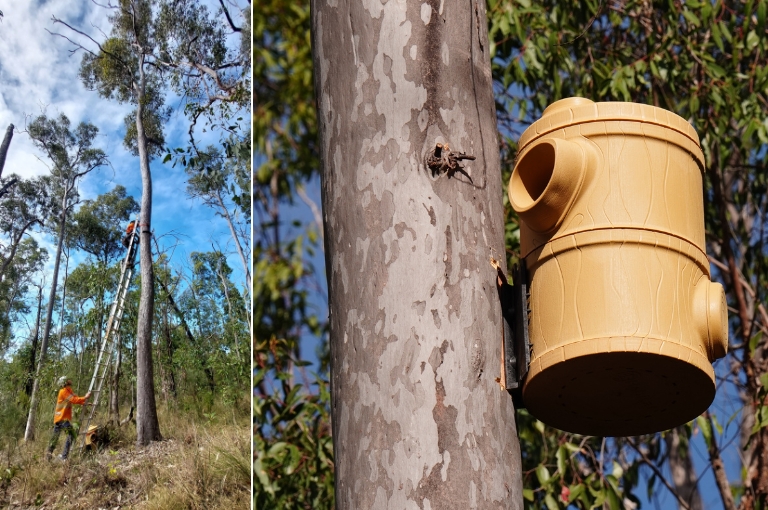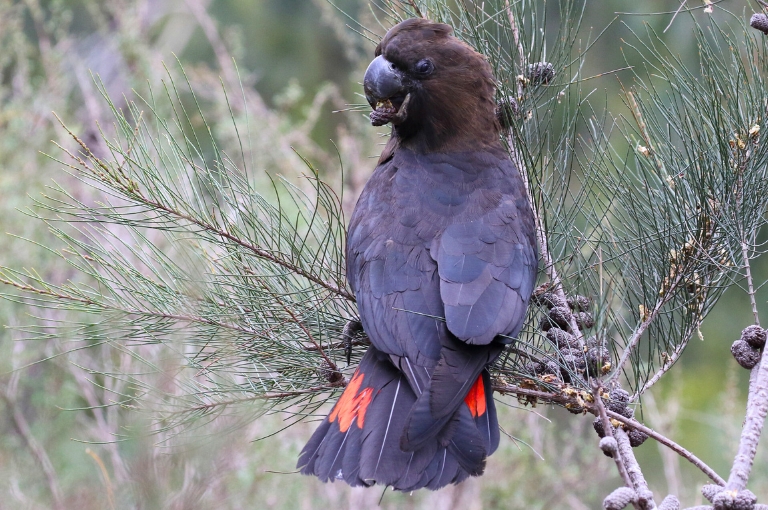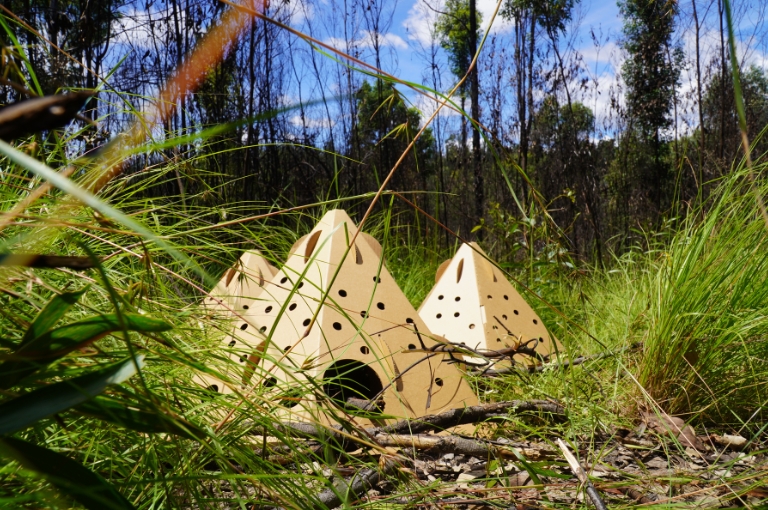
Masked owls, brush-tailed phascogales, squirrel gliders and other animals in Nymboida have received new cutting-edge residences.
State-of-the-art Habitat Modular Nest Boxes and biodegradable Habitat Pods have been installed to provide wildlife in Nymboida with additional homes after a fire ripped through the region in October last year – a place still recovering from the Black Summer bushfires.
The supplementary habitat was put up by Clarence Landcare as part of Glideways, Flyways and Stepping Stones – a partnership between the Great Eastern Ranges and WIRES.
“The most recent bushfire destroyed many of the remaining old hollow-bearing trees in Nymboida, while also clearing the understory used by small animals. We’ve installed nest boxes to replace those lost hollows while the Habitat Pods are intended to provide animals that can’t escape into trees with habitat and a refuge from predators,” says Daniel McCawley, Clarence Landcare.
The nest boxes, created by Habitat Innovation & Management, are designed to mimic the microclimate of a natural tree hollow and are customised to suit a range of species. The ones installed in Nymboida include the company’s newly minted nest boxes for glossy black-cockatoos.

Clarence Landcare is also trialling the use of biodegradable Habitat Pods – a teepee-like cardboard shelter designed by Dr Alex Carthey of Macquarie University for deployment after a climate disaster to protect wildlife from predators and exposure.
The Habitat Pods were installed in burnt grassland and despite heavy rainfall have survived virtually unscathed.
“We are excited to see how the new glossy black-cockatoo boxes go, but also about trialling the Habitat Pods which, unlike most habitat solutions, are designed to assist ground-dwelling animals,” says Daniel.
The artificial habitat has been placed on private properties in Nymboida to supplement the planting and bush regeneration work done as part of the project.

Gary Howling, CEO of Great Eastern Ranges says that the funding provided by WIRES has enabled Clarence Landcare to prepare for future bushfires.
“Often funding is provided for on-ground efforts in response to a climate disaster such as a bushfire or flood. While we rebuild from the last one, we need to also be preparing for the next one so that we can rapidly deploy solutions like these to assist local wildlife in the immediate aftermath, says Gary Howling.



 Article
Article